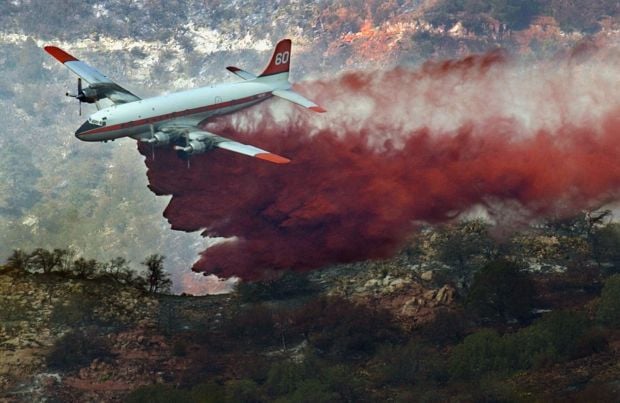As the Amazon burns, a bad situation could get worse for forests in Arizona.
“The relationship is very clear,” said Don Falk, a professor at the University of Arizona.
Deforestation in the Amazon accelerates changes in global climate. And these changes eventually affect forests close to home.
They’re driving longer, warmer and more intense wildfire seasons, he said. And they’ve already fueled unprecedented wildfires in Arizona and across the West.
Tropical forests like the Amazon rarely burn when left to nature, but fire has always had a place in the life cycle of forests in Arizona.
Low-intensity fires in Arizona historically cleared the forest floor, limiting the accumulation of wildfire fuel, while leaving mature trees standing.
In the 1880s, people and livestock started interrupting fire’s place in this cycle, Falk said. Then U.S. federal policies suppressed wildfire for decades staring in the 1920s, allowing fuel to accumulate. Changes to global climate dried it out with drought and higher temperatures.
In the worst cases, flames jumped from the ground to the crowns of densely packed trees.
They engulfed old-growth forests, spreading faster and more destructively through more forest than ever before.
In 2002 and 2003, for example, it happened in the peaks above Tucson on Mount Lemmon during the Bullock Fire and then the Aspen Fire. Since then, hundreds of thousands of acres have burnt this way in Arizona.
The Amazon is an important buffer against the warming climate, which has created the conditions for these unprecedented fires. It absorbs around 2 billion of the 40 billion tons of carbon dioxide emitted globally each year.
At least a quarter of the stored carbon on earth is concentrated in tropical forests like the Amazon, which grow on barely 12% of the earth’s land, Falk said.
Forests fires across the globe may contribute to climate change by burning carbon these forests store, according to a 2015 study by researchers from universities across the country.
As the Amazon burns, for example, it absorbs less carbon dioxide.
Meanwhile, more billows from the flames, warming the planet by trapping heat inside the atmosphere.
“It’s a double hit to the global climate system,” Falk said.
For each hector burned, about two and a half acres, the Amazon losses about 100 tons of carbon that it once stored, said Ovidiu Csillik, a researcher at Arizona State University. It’s his estimate for trees averaging 30 meters tall.
He analyzes satellite imagery and data collected from above the forest in an airplane to make estimates like these.
The smoke is too thick to asses the destruction of the ongoing fires, he said. He’ll have to wait for it to clear.
Scientists warn the Amazon could transform into something like a savanna well before the last acre is burned. It would hinder any plan to slow the effects of climate change.
While the fires there have captured the world’s attention, this hasn’t been the worst year for fires in the Amazon.
More fires burned in the Amazon in the early 2000s. So far this year, however, the wildlife season has been the most active one in the region since 2010, according to NASA scientists who analyzed satellite imagery of the fires.
These fires contribute to a warming trend that will likely result in more drought and wildfires in Arizona, Falk said. “The warning signs are that they’re going to start happening more frequently.”
A 2017 study Falk co-authored predicted significant increases in the area wildfires will burn in the West. “So far these projections have been spot on,” he said.
This year is a good example of how rain won’t always bail us out of wildfire season, Falk said. Normally, the monsoon season would almost completely stop wildfires near the end of June, but this year fires burned into July, August and even September.
He notes that the area burned by wildfires every year in the West is on an unmistakably upward trend.
The U.S. Forest Service is racing to thin parts of the forests in Arizona before the next unprecedented wildfire. Foresters at Coronado National Forest, for example, aim to thin tens of thousands of acres by cutting down certain trees and setting controlled burns, among other methods to reduce the fuel load. The problem in the Amazon is vastly different. While foresters in Arizona attempt to slow wildfires by thinning forests, fires in the Amazon are largely due to intentional deforestation.
This deforestation influences the entire world, including forests thousands of miles away in Arizona, Falk said.
“It has everything to do with us.”





